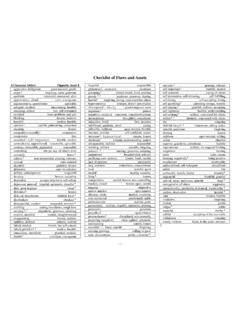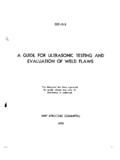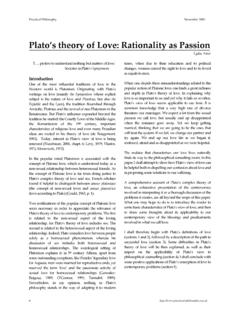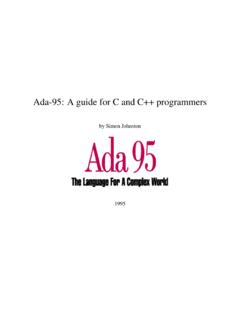Transcription of SANT-a-Flaws – The Naughty List
1 Viceroy Research Group 1 SANT-a-Flaws The Naughty List S & T s l a b o r-i n t en s i v e, fa u x-t e c h r o l l u p a l s o o p er a t es n u m er o u s u n d i s c l o s e d , o f f-b a l a n c e s h ee t en t i t i es p l a g u ed b y a l l e g a t i o n s o f c r i mi n a l c o n d u c t i n c l u d i n g b r i b er y & c o r r u p t i o n. PLEASE READ IMPORTANT DISCLAIMER PAGE 4 DECEMBER 15, 2021 Viceroy Research is short S&T AG (XTRA:SANT): a roll-up of low-quality, labor intensive IoT assets, often acquired under fire-sale circumstances.
2 Analysis of individual subsidiary performance shows flatlining and negative growth due to frauds & federal raids, insolvency, security breaches, and general operational decline. S&T also appears to hide several subsidiaries in an off-balance sheet structure to conceal corporate fraud. Management have hidden these risks from shareholders and engaged in several undisclosed related-party transactions. These companies have individually been completing large government tenders to the Ukrainian military and providing surveillance equipment and/or services to Chinese state surveillance agencies, among others.
3 OBEs are also implicated in numerous criminal cases of racketeering, corruption and bribery related to tender fraud. S&T s Absurd Acquisitions: Putting Together the Puzzle The roll-up nature of S&T is critical to its survival and growth. In short, S&T buys low-quality revenues and earnings at fire-sale prices to artificially boost value. Most tech acquisitions are made at revenues, and complements S&T s market trading at 1x revenue, generating false value . S&T s tech acquisitions take the form of a distressed fund: buying flatlining, labor-intensive tech companies at revenue fire sale prices.
4 Almost every acquisition S&T has made sees an immediate decline in revenue, whether due to broad accusations of tender fraud, federal raids, being the target of hacks, or insolvency. Acquisitions are typically made for cash consideration, with zero incentive for management to stick around. We have found instances of S&T acquiring virtually identical businesses from the same founders to supersede previous acquisitions. No attempt is made to integrate these businesses: the only real integration attempt we have seen was Kapsch, which was rebranded as Kontron, because it was effectively blacklisted from several jurisdictions due to fraud and corruption.
5 In most instances, subsidiary revenues decline pre- and post-acquisition with no real capitalization or evidence of R&D. We know this because we have pulled accounts individually of these entities. Ramping acquisitions are necessary to S&T s survival: management even state in financial accounts that the company is crisis proof because it has sufficient cash to continue making acquisitions. Hiding your secret companies - OBEs S&T s subsidiary accounts traced by Viceroy Research show numerous minority interests that appear nowhere in S&T management reports or in audited financial statements.
6 S&T s subsidiary holding companies state that they do not consolidate these Off Balance-Sheet Entities (OBEs) as they only hold a minority interest, and do not exercise control. These entities nonetheless represent themselves as part of the S&T group while submitting government and state tenders. These off-balance sheet entities assume: The S&T name, staff and intellectual property S&T Group s systems qualifications, including those from Microsoft, Cisco, & various other tech partners S&T Group s references and other brands within the S&T family ( Kontron).
7 Some of these off-balance sheet entities are currently under criminal investigation for embezzlement, tender fraud and corruption. Viceroy Research Group 2 Off-balance sheet activities Our research here is limited to government tenders that these OBEs win, which are extraordinarily large. These OBEs are among the highest earning S&T-branded entities. Eastern European governments would likely be S&T s largest customers, yet we see no direct revenues from these customers or jurisdictions. We estimate contracts of OBEs would generate > 100m a year.
8 These entities are also plagued with corporate fraud and provide services we believe are morally bankrupt. In Ukraine, S&T-branded entities are currently involved in criminal court for allegedly bribing officials and banks to avoid public tender processes for its goods and services, as well as providing kickbacks to decision makers. In China, S&T branded entities are part of the supply chain providing surveillance systems to Chinese state security agencies, including those who operate in Xinjiang. The resolution of the off-balance sheet issue will not bring these tenders to S&T: we believe the outcome of current criminal indictments and proceedings will severely limit future government tender opportunities.
9 Catch 22: unmitigable disaster There is a twofold problem with this corporate structure which S&T can t mitigate: If these entities are part of the S&T Group and were omitted by some accounting oversight , then management must explain where hundreds of millions in government contracts of these off-balance sheet entities facilitated has ended up. If these entities operate separately to S&T, they have committed tender fraud in all these environments by stealing S&T s IP while operating in direct competition with consolidated S&T subsidiaries.
10 - S&T cannot deny they knew of the existence of these entities, as they own ~10% of them. - S&T appears to have also owned the Ukrainian domains back to the early 2000 s with the acquisition of Soft-Tronik. These companies cannot be found in S&T s domain sitemap, are never referenced as part of the S&T Group (even as minority interests), and S&T records zero income from minority interests, or any franchising/licensing agreements for the S&T business. Viceroy believe that S&T s acquisitions in limited oversight jurisdictions are used to interact with these off-balance sheet entities.







